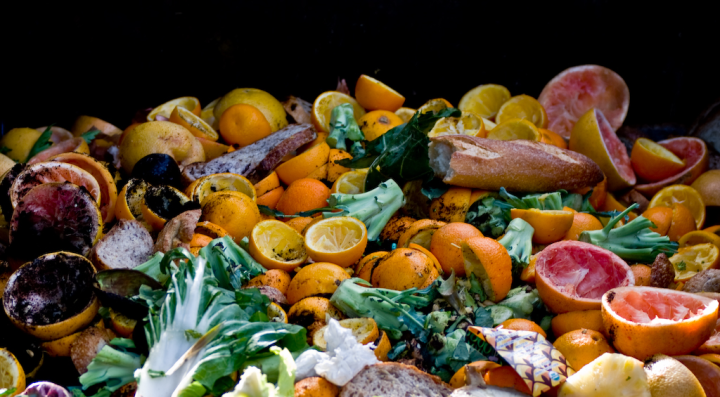
Nice Ugly New Camera

A few weeks back, I bought a Pentax K20D and now that I’ve taken 500+ pictures with it, I suppose I should say a few words. To illustrate, photographs of garbage.
Previously, I’ve run pictures of new cameras here, but not this time. The K20D is a commodity, so there are tons of shots all over the Net. And anyhow, it’s kinda ugly. It’s possible to be extremely functional and also beautiful—consider a violin or a tugboat—but not, so far, in the world of DSLRs. The camera is bulbous and swollen and button-infested.
It takes great pictures, but then so do lots of other cameras. Saturday morning, we went to Granville Island Market, and as we walked in, there was a dumpster just at the right angle for the sun to come in.
Here’s the thing: Given reasonable light and a stationary subject that’s not too far away, and a dry location, you can point pretty well any modern digicam, any size, at it, put it in full-auto mode and press the button and you’ll get a great picture.
With a decent mid-range SLR like the K20D, you can do the same thing, sometimes, when the light’s not great and the subject’s not co-operative and the environment isn’t friendly. Plus you can go out in the rain.
Here’s some more garbage. I bet yours doesn’t look this great.
What I Like ·
You can go out in the rain, it’s super-weatherproof.
Pros sneer at 3 shots/second, but it feels fast to me.
Switching all the things you might need to switch before you shoot is fast and convenient; the ergonomics are much better than I could have done.
Compared to the competition, it’s pretty small and light.
The selection of lenses is just outstanding, I mean insanely great. Of the 550 or so shots I’ve taken, I bet 80% have been with the 40mm “pancake”; it’s a lovely combination.
Lots of megapixels let you crop way down when you screw up the composition.
The combination of nice smooth ISO1600 and anti-shake means I can almost always shoot inside without a flash.
Hundreds of shots on one battery charge.
What I Don’t Like ·
Compared to the previous Pentax and my little Ricoh, it’s big and heavy.
Too many megapixels meant I had to buy a new computer to handle the big honkin’ raw files. Plus if they’d squeezed less onto the silicon, the low-light performance would be even better.
Still Work to Do · There are pictures that this camera could take but I haven’t learned how yet. Consider the following. Inside the Granville Island market, a shaft of sun illuminated a heap of green grapes, it looked like a work of one of the Renaissance’s Old Masters, as if the grapes were casting light on the nearby faces.
Sigh. There are lots of buttons on the back of the camera that I haven’t figured out yet, and an “Enhanced Dynamic Range” function and lots of other goodies too. As long as I keep seeing things that I want to capture but can’t, I’ll keep thinking about cameras.
Comment feed for ongoing:
From: Paul McMahon (Apr 14 2008, at 01:17)
That's some tasty looking garbage.
[link]
From: Alex Waterhouse-Hayward (Apr 14 2008, at 21:40)
Tim
That last shot with light shafts. How does one take such a photo? It has nothing to do with your technique (although a bit helps). It has all to do with shadow detail and a camera's ability to handle contrast. In the dark (but not so dark) ages of film the way contrasty situations were dealt with was with professional colour negative film made exclusively for the wedding photography crowd. This film somehow had to handle bad sunny days, black tuxedos and pristine white wedding gowns. This film was rated at 160 ISO (the Kodak variety) and most photographers routinely exposed it at 100 or 80 ISO. In short they were overexposing the film. But this film which was inherently low in contrast would show detail in those shadows without blocking up (in the parlance of today substitute that with blow out) the highlights.
About a year and a half ago that magazine with terrible photographs, Popular Photography had a column on how digital camera manufacturers were going to release cameras with that colour negative tolerance for contrast. This is now called high dynamic range.
In brief you would overexpose that shaft of light to get detail in the shadows without blowing out the shaft.
Does that Pentax have high dynamic range? A camera that has it (even though they didn't call it that) is the Fuji S-5 Pro. It is similar to the D-200 Nikon but it has a Fuji made CCD that does wonders with contrast.
Unless you have a new camera with high dynamic range you are dealing with a camera that is no different from a film camera loaded with Ektachrome. And the difference between amateur Ektachrome and professional Ektachrome is that the latter has less contrast. Contrast is usually the biggest enemy of good photography.
Alex Waterhouse-Hayward
[link]